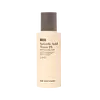What's inside
What's inside
 Key Ingredients
Key Ingredients

 Benefits
Benefits

 Concerns
Concerns

 Ingredients Side-by-side
Ingredients Side-by-side

Water
Skin ConditioningGlycerin
HumectantGlycolic Acid
BufferingButylene Glycol
HumectantPropylene Glycol
HumectantGluconolactone
Skin ConditioningMelaleuca Alternifolia Leaf Extract
PerfumingHamamelis Virginiana Leaf Extract
Skin ConditioningNiacinamide
SmoothingChamomilla Recutita Flower Extract
MaskingRubus Idaeus Fruit Extract
AstringentCitrus Limon Fruit Extract
MaskingSalicylic Acid
MaskingAcer Saccharum Extract
Skin ConditioningPortulaca Oleracea Extract
Skin ConditioningAloe Barbadensis Leaf Juice
Skin ConditioningAmylopectin
Dextrin
AbsorbentXanthan Gum
EmulsifyingTetrasodium EDTA
Sodium Hydroxymethylglycinate
PreservativePolyglutamic Acid
Skin ConditioningWater, Glycerin, Glycolic Acid, Butylene Glycol, Propylene Glycol, Gluconolactone, Melaleuca Alternifolia Leaf Extract, Hamamelis Virginiana Leaf Extract, Niacinamide, Chamomilla Recutita Flower Extract, Rubus Idaeus Fruit Extract, Citrus Limon Fruit Extract, Salicylic Acid, Acer Saccharum Extract, Portulaca Oleracea Extract, Aloe Barbadensis Leaf Juice, Amylopectin, Dextrin, Xanthan Gum, Tetrasodium EDTA, Sodium Hydroxymethylglycinate, Polyglutamic Acid
Water
Skin ConditioningButylene Glycol
HumectantGlycerin
HumectantPentylene Glycol
Skin ConditioningSalicylic Acid
MaskingAmylopectin
Dextrin
AbsorbentXanthan Gum
EmulsifyingPanthenol
Skin ConditioningSuccinic Acid
BufferingTranexamic Acid
AstringentAllantoin
Skin ConditioningPropylene Glycol
HumectantCamellia Sinensis Leaf Extract
AntimicrobialCentella Asiatica Leaf Extract
Skin ConditioningAloe Barbadensis Leaf Extract
EmollientSodium Hyaluronate
HumectantOpuntia Ficus-Indica Extract
Skin ConditioningPhenoxyethanol
PreservativeDisodium EDTA
1,2-Hexanediol
Skin ConditioningCitric Acid
BufferingPotassium Sorbate
PreservativeSodium Benzoate
MaskingEthylhexylglycerin
Skin ConditioningWater, Butylene Glycol, Glycerin, Pentylene Glycol, Salicylic Acid, Amylopectin, Dextrin, Xanthan Gum, Panthenol, Succinic Acid, Tranexamic Acid, Allantoin, Propylene Glycol, Camellia Sinensis Leaf Extract, Centella Asiatica Leaf Extract, Aloe Barbadensis Leaf Extract, Sodium Hyaluronate, Opuntia Ficus-Indica Extract, Phenoxyethanol, Disodium EDTA, 1,2-Hexanediol, Citric Acid, Potassium Sorbate, Sodium Benzoate, Ethylhexylglycerin
 Reviews
Reviews

Ingredients Explained
These ingredients are found in both products.
Ingredients higher up in an ingredient list are typically present in a larger amount.
We don't have a description for Amylopectin yet.
Butylene Glycol (or BG) is used within cosmetic products for a few different reasons:
Overall, Butylene Glycol is a safe and well-rounded ingredient that works well with other ingredients.
Though this ingredient works well with most skin types, some people with sensitive skin may experience a reaction such as allergic rashes, closed comedones, or itchiness.
Learn more about Butylene GlycolDextrin is used to thicken a product and helps bind ingredients together. It is created from starch and glycogen.
As an emulsifier, dextrin prevents ingredients from separating. This helps elongate a product's shelf life.
Studies show coating UV filters with dextrin prevents these ingredients from being absorbed. This helps UV ingredients last longer on the skin.
Learn more about DextrinGlycerin is already naturally found in your skin. It helps moisturize and protect your skin.
A study from 2016 found glycerin to be more effective as a humectant than AHAs and hyaluronic acid.
As a humectant, it helps the skin stay hydrated by pulling moisture to your skin. The low molecular weight of glycerin allows it to pull moisture into the deeper layers of your skin.
Hydrated skin improves your skin barrier; Your skin barrier helps protect against irritants and bacteria.
Glycerin has also been found to have antimicrobial and antiviral properties. Due to these properties, glycerin is often used in wound and burn treatments.
In cosmetics, glycerin is usually derived from plants such as soybean or palm. However, it can also be sourced from animals, such as tallow or animal fat.
This ingredient is organic, colorless, odorless, and non-toxic.
Glycerin is the name for this ingredient in American English. British English uses Glycerol/Glycerine.
Learn more about GlycerinPropylene Glycol is an odorless, colorless liquid. As a humectant, it helps skin retain moisture. It also aids in delivering active ingredients.
Another role of this ingredient is preventing a product from melting or freezing. Propylene glycol also adds antimicrobrial properties to a product, elongating product lifespan.
This ingredient is considered an organic alcohol and commonly added into both cosmetics and foods.
Those with sensitive skin or conditions may develop a rash when using this ingredient.
Learn more about Propylene GlycolSalicylic Acid (also known as beta hydroxy acid or BHA) is a well-known ingredient for treating skin that struggles with acne and clogged pores. It exfoliates both the skin's surface and deep within the pores to help clear out buildup, control oil, and reduce inflammation.
Unlike AHAs (alpha hydroxy acids), salicylic acid is oil-soluble. This allows it to penetrate into pores which makes it especially effective for treating blackheads and preventing future breakouts.
Salicylic acid is also known for its soothing properties. It has a similar structure to aspirin and can calm inflamed or irritated skin, making it a good option for acne-prone skin that is also sensitive.
Concentrations of 0.5-2% are recognized by the U.S. FDA as an over-the-counter topical acne product.
It can cause irritation and/or dryness if one's skin already has a compromised moisture barrier, so it's best to focus on repairing that before introducing this ingredient into your routine.
While salicylic acid does not increase sun sensitivity, it’s still important to wear sunscreen daily to protect your skin.
If you are looking for the ingredient called BHA or Butylated Hydroxyanisole, click here.
Learn more about Salicylic AcidWater. It's the most common cosmetic ingredient of all. You'll usually see it at the top of ingredient lists, meaning that it makes up the largest part of the product.
So why is it so popular? Water most often acts as a solvent - this means that it helps dissolve other ingredients into the formulation.
You'll also recognize water as that liquid we all need to stay alive. If you see this, drink a glass of water. Stay hydrated!
Learn more about WaterXanthan gum is used as a stabilizer and thickener within cosmetic products. It helps give products a sticky, thick feeling - preventing them from being too runny.
On the technical side of things, xanthan gum is a polysaccharide - a combination consisting of multiple sugar molecules bonded together.
Xanthan gum is a pretty common and great ingredient. It is a natural, non-toxic, non-irritating ingredient that is also commonly used in food products.
Learn more about Xanthan Gum